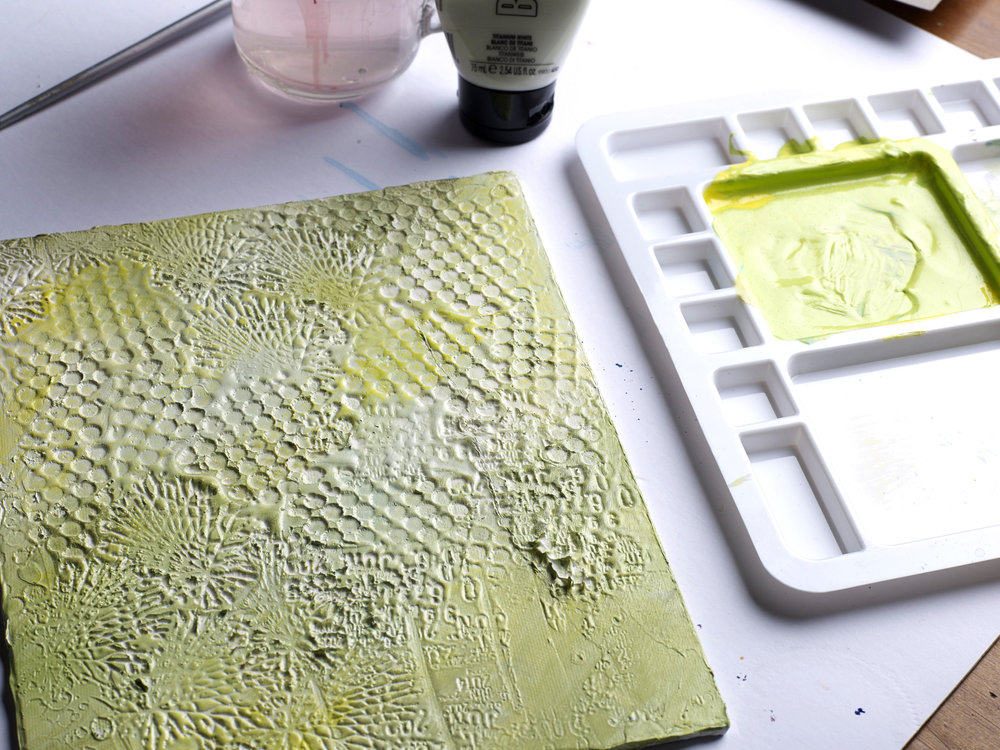- 23/05/2019
How to Create Texture in Paintings for Interesting Abstract Art
How to Create Texture in Paintings for Interesting Abstract Art
Are you a fan of the impasto painting technique and have a desire to create abstract art? Well creating rich texture is easier than you think and it makes for visually interesting work. Many moons ago, the approach to painting was to eliminate the appearance of brush marks. These days, however, tactile art involves anything from tissue to drill bits. There are also some genius methods for forming unique textures and this week we explore a selection. So if you’re looking for tips then you’re in luck - read on to find out more.
Acrylic Texture Mediums
Acrylic texture mediums are easy to use and add a whole new dimension to paintings. Mixed with acrylic colour they enhance the quality and tactile appearance of abstract art. Depending on the brand, products are known as gel mediums or acrylic texture gels and here are three that you can find at The Art Shop Skipton; Liquitex, Pebeo and Winsor & Newton.
Textured Abstract Art Techniques
Combing, stamping and clouding are different techniques for creating texture. They’re also easy to do and create abstract marks especially if you've got an eye for pattern. For combing, simply use old comb’s in a variety of size and tooth openings. These can be used with paint or other media to create swirls, dotting and lines. Stamping is also great for texture, especially old pins and buttons. And for texture in watercolour, yes that’s a thing, try sea sponges for a naturally fine finish.
Textured Acrylic Pouring
If you haven’t yet of heard acrylic pouring - welcome to the party! It’s a technique that involves mixing acrylic with medium and pouring to create marbleised results. Contemporary paintings usually demonstrate a variety of special effects and so acrylic pouring is one great way of achieving abstract art. Simply mix Liquitex Pouring Medium with soft-bodied acrylic colour and then pour and drip, whichever you choose, directly on to your favourite surface.
Experiment with Paper and Cloth
It may sound silly but tissue and cloth actually make for some interesting effects. When scrunched up and glued they can be painted over to leave varying textures behind. Alternatively, you could add white tissue paper over areas of your abstract art. This rugged effect when left uncovered suggests rocks or tidal waves.
Let’s Get to The Nitty-Gritty
If you’re trying to create a granular look, natural impurities can affect the chemistry of paint. So at The Art Shop Skipton, you’ll find painting mediums with treated sand for added texture. Galeria Sand Texture Gel by Winsor & Newton gives a fine and consistent finish. On the other hand, Pebeo’s granular alternative is available in a variety of colours. Liquitex also offers a gel that can be combined with other Liquitex mediums. Simply contrast flat colours with the texture of sand for added grunge in your abstract art.
Create Your Own Abstract Art with The Art Shop Skipton
We hope that you’ve enjoyed reading how to create amazing texture in paintings. All of the above techniques are great places to start but of course, it’s all about experimenting. Once you have found a way that you love for creating textured abstract art, why not browse our online guides and experiment just that little bit more? In our Project Zone, explore how-to guides using Pebeo Mixed Media products. Whether the Dyna Effect or Orange Flowers, master new techniques with The Art Shop Skipton.
Build texture in your abstract art with Liquitex specialist mediums.
 Same Day Dispatch Mon-Fri Before 2PM
Same Day Dispatch Mon-Fri Before 2PM

 Free UK Delivery on Orders Over £50
Free UK Delivery on Orders Over £50


